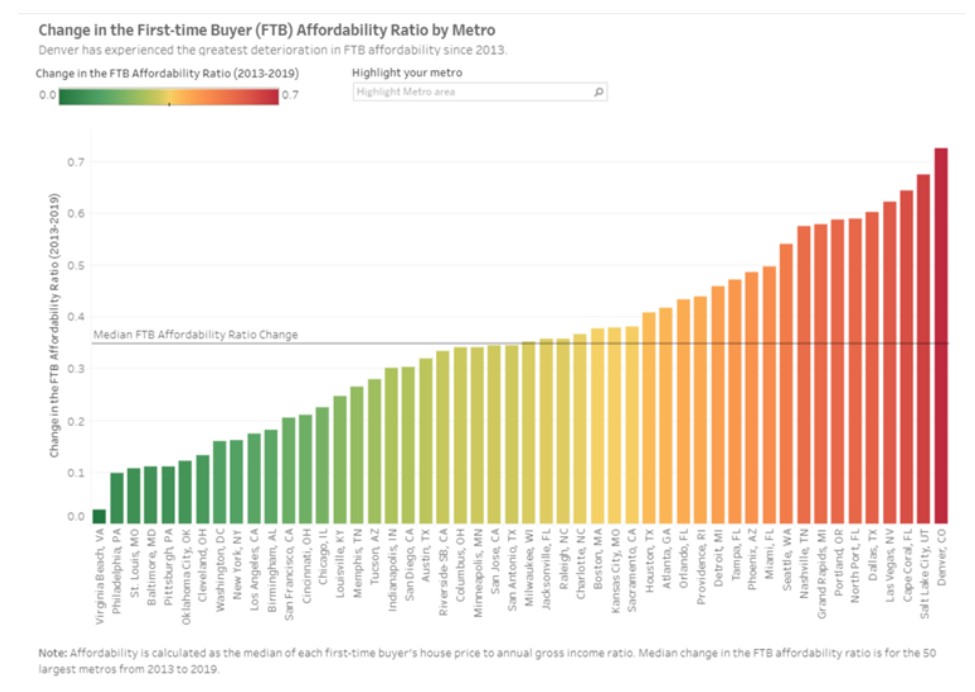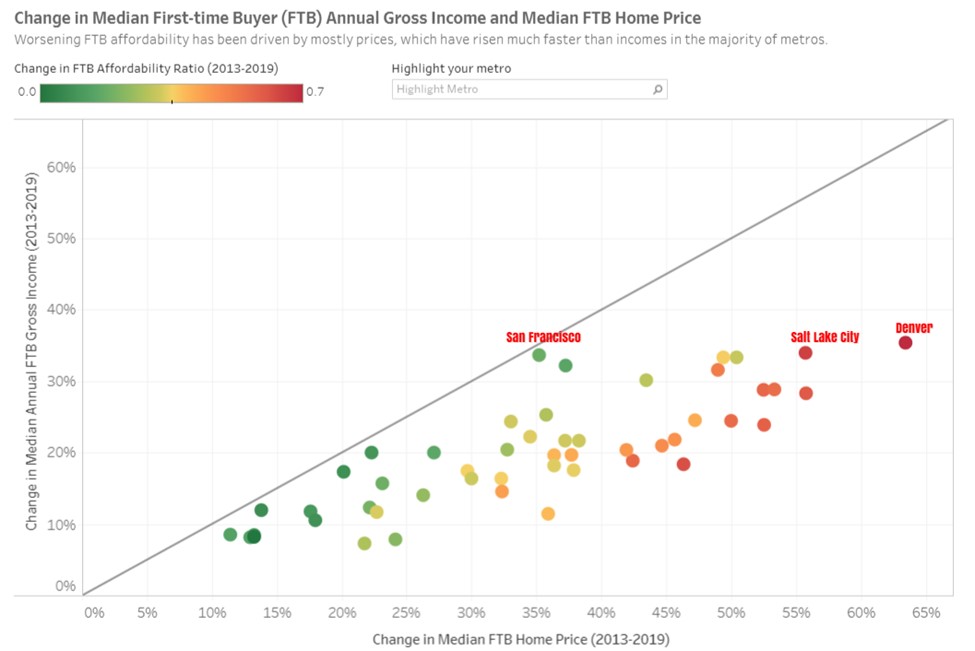Archive for March, 2021
The Economy Has No Pause Button (4)
Posted by Joshua Sharf in Uncategorized on March 22nd, 2021

Of all the lies told about the Wuhan coronavirus and our response to it, one of the most damaging has been the idea that the economy has a pause button, that we could safely halt the economy for weeks or even months, and that when we turned the key, everything would start up again without a hiccup. In the interim, all we needed to do was spread enough cash around. The consequences of that monumental miscalculation are increasingly obvious, as the US economy has a hard time getting all cylinders to fire at all, much less in synch.
The latest evidence comes from the Wall Street Journal, reporting that container traffic at the country’s ports is facing an unprecedented traffic jam. Since last October, more than 25% of incoming containers have waited at least 5 days to be handled, compared to less than 5% normally. Some of this might a result of a labor shortage at the ports, but most of it is from increased imports. Indeed, even as domestic production is in chaos, imports are at an all-time high in dollar terms.
That’s funded by those dollars the Fed is printing. That means that even as small businesses go under, all that money we’re distributing isn’t fueling domestic production, but foreign buying.
The crowded ports are playing havoc with supply chains in general, forcing US plants to shut down or defer production for lack of materials:
The disruptions underscore how several forces are coming together to squeeze the world’s supply chains, from the pandemic-driven rise in consumer demand for tech goods to a backlog of imports at clogged California ports to U.S. factory outages caused by weather woes. They are creating cost increases and delays for numerous industries, company executives and analysts say, affecting profit margins and the prices that companies and consumers ultimately pay for many goods.
“We’ve been scrambling to get enough raw material,” said Tom Nathanson, chief executive of Summit Plastics Inc., who predicted possible lasting damage to the plastics industry in the form of lost customers.
He said the Mississippi company, which makes plastic sheeting for everything from hospital gowns to packaging, was already contending with supply-demand issues before the Texas cold spell. “The costs have absolutely been passed on,” Mr. Nathanson said. “We, as consumers, are feeling that crunch.”
The disruptions, which come as the U.S. and some other economies are beginning to lurch toward normalcy, show how messy the reopening of business is proving to be a year after pandemic’s onset, and how vulnerable supply chains remain.
There’s no doubt that the Texas freeze and the resulting electricity disruption hurt, but the weather-related excuses sound a lot like what we used to hear from the Soviets about their grain harvests. The fact is, short, sharp events like a freeze don’t do lasting damage to an otherwise healthy economy or industry. The damage hasn’t been done by the weather, but by deliberate decisions to shut down production, and subsidize foreign consumer purchases. The sooner we’re done with this nightmare of interference, the better for everyone, except the politicians imposing it.
Zionism Returns
Posted by Joshua Sharf in Uncategorized on March 18th, 2021

Some of you may have thought it never went away, but judging from the attitudes of what passes for American Jewish leadership these days, it’s at a minimum been in deep hibernation.
This bold statement announcing a new campus-based Zionist organization seeks to revive its spirit among contemporary American Jews. Blake Flayton, a senior at George Washington University in Washington, DC is one of the co-founders of the New Zionist Congress, and he writes with a moral clarity and purpose of vision rarely overtly expressed by mainstream Jewish organizations.
The New Zionist Congress will educate: hosting weekly discussions on all issues pertaining to Jews worldwide, promoting a book-of-the-month for members to read and discuss, and producing a new podcast where young Jews will speak with leaders of our community about the complexities of our people. New Zionist Congress will charter campus chapters, and send speakers to individual universities to mobilize and inspire Jewish students to be fierce activists and teachers. We will sponsor debates, lectures, movie nights, and trips to Israel. We will advocate for Jewish people, not only in the United States, but everywhere in the world, and spearhead efforts to oppose BDS resolutions, fight for the adoption of the International Holocaust Remembrance Alliance definition of anti-Semitism, and combat the new incarnation of Soviet-style conspiracy theories that manically obsess over Zionism and target the only Jewish state as the root of all earthly evils.
Flayton also recognizes the root of the problem – intersectionality and the iron grip it has on college campuses and, increasingly business and broader society. The Jewish left, which includes almost all of the non-orthodox communal leadership, has willingly submitted to its dictates in the hope of recruiting allies against anti-semitism and its contemporary manifestation, anti-Zionism.
I’m sorry. If a Jew is called a Nazi on campus, is it really his or her responsibility to invite the offending student to share a bagel on the quad? If someone bans me from their organization, is it really my responsibility to, as one individual put it to me recently, “internalize ways in which I am not welcoming, and strive for a more intersectional approach to dialogues about oppression and power”? What the hell does that even mean? What other minority community would be forced to endure this jargon-filled hellscape? Every time Jews speak out about anti-Semitism, we’re immediately told to endure a corporate diversity training seminar, one which concludes that it’s still our fault for causing all the drama.
And yet for many in the Jewish community, this is a tolerable price to pay to sit at the table. Well, I don’t want a seat at that table. I don’t want to be anywhere near that table. I am in fact determined to flip that table over.
The mainstream approach has been a spectacular failure. When the Colorado state legislature considered and anti-BDS bill a number of years ago, only Jews showed up to testify in favor of it. That failure has been completely lost on the Colorado JCRC, whose main page is full of “anti-racism” resources and devoid of pro-Jewish ones.
What give Flayton a chance at succeeding is that he’s not a conservative or a Republican. He’s a left-of-center Democrat from Scottsdale, Arizona. His efforts at combating toxic intersectionality received an early boost from Bari Weiss. So this isn’t an attack from outside the Democratic tent.
We’ll be following the New Zionist Congress with great hope and interest.
Mank – With Spoilers
Posted by Joshua Sharf in Uncategorized on March 6th, 2021

You don’t need my donation. You don’t need anybody’s. You have everything it takes, right here.
Meaning you can make the world swear King Kong is ten stories tall, and Mary Pickford a virgin, at 40. Yet you can’t convince starving voters that a turncoat Socialist is a menace to everything Californians hold dear?
You’re barely trying.
That’s Gary Oldman’s Herman Mankiewicz explaining the power of the mass media and imagination to MGM’s production manager Irving Thalberg in the Netflix film Mank.
This article contains spoilers, so consider yourself warned. Proceed at your own risk.
Mank shows famed Hollywood screenwriter Herman Mankiewicz struggling to finish the screenplay for Citizen Kane on Orson Welles’s compressed deadline, as he simultaneously recovers from a car accident, fights off and accommodates his drinking, and otherwise deals with the personal fallout from years of injudicious behavior off the set. In some ways, it’s a biopic of Mankiewicz, one of the great screenwriters from the golden age, but also cursed with a a terribly self-destructive personality.
The movie seeks to answer the question: Why would Mankiewicz write a movie that savaged his longtime personal acquaintances William Randolph Hearst and Hearst’s mistress, the actress Marion Davies? It pins the answer down in the 1934 California governor’s race, and the studios’ and Hearst’s desire to see leftist upstart Upton Sinclair defeated at all costs.
Sinclair, much like a certain 2016/2020 presidential candidate, was a Socialist who became a Democrat in order to run in that primary. If you learned about him in school, it was probably for his journalistic muckraking career, most famous for his book The Jungle, about the terrible safety and sanitary conditions in the meat processing industry.
Sinclair won the primary, scaring not only Republicans but also a fair number of Democrats, and the studio heads went to work to defeat him. Louis B. Mayer, one of the heads of MGM, was also the chairman of the California Republicans, so he not only ran the political campaign, he helped organize the other studios. They coerced employees to donate and threatened to move their operations to Florida.
But things didn’t really click until the studios started doing their movie magic. In a series of scripted newsreels presented as actual man-on-the-street interviews, white, middle-class Californians were seen supporting the Republican, while minorities, immigrants, and migrants were seen supporting Sinclair and his End Poverty In California (EPIC) program. The results were predictably devastating to Sinclair.
In the event, Sinclair was defeated. But he had mobilized a new group of voters, done better than previous California Democrats running for governor, and seen a number of state legislators elected on his platform. The man who would be elected governor in 1938, Culbert Olson, was a Sinclair acolyte.
The scene above is invented. Mankiewicz may never have given Thalberg the idea to use the studios’ storytelling power to defeat Sinclair, but the campaign against Sinclar was very real.
And here’s where the movie puts its thumb on the scale. In Mank, the cameraman chosen to direct the spots kills himself out of shame and guilt at what he’s done, telling us exactly how the filmmakers view those shorts. They consider them a work of shameless propaganda, character assassination, and a betrayal of whatever ethical considerations attend to film.
(In real life, the director shot the films, took his paycheck, went home, and apparently never suffered any pangs of conscience. C’est la guerre. And in real life, Mankiewicz’s politics were somewhat right-of-center; he would have been unlikely to support Sinclair, although he might have bristled at being told to contribute to a political campaign by his bosses.)
The irony of a big tech studio like Netflix making a movie that criticizes 1930s Big Media for trying to gang-tackle an important election after what happened in 2020 is staggering.
For four years, the major newspapers, networks, and social media networks convinced themselves that something had gone terribly wrong in 2016’s presidential election, that they were significantly to blame for not having intervened to prevent it, and damned if they were going to let that happen again.
So the New York Times openly and clearly says that certain journalistic standards will have to be waived in the Age of Trump and The Washington Post signals that “Democracy Dies In Darkness.” Together, they spend 2 years pushing a false “Russian collusion” narrative, a narrative they knew was false because leading network reporters were involved in helping to create it. When the narrative inevitably fell apart, the press never questioned how such a story got such traction in the first place, and continues to interview its leading Democratic proponents such as Rep. Adam Schiff as though nothing untoward had happened.
Then, in 2020, Twitter and Facebook and the large legacy media outlets conspire – there really is no other word for it – conspire to suppress the Hunter Biden laptop story, which showed that ol’ Joe Biden knew exactly what sort of business his son was involved in and was planning to profit handsomely from it.
This stuff is election intervention on a relative scale that the Louis B. Mayer could only dream of.
Let me be clear – I liked Mank. I thought it was well-cast, well-acted, entertaining, informative, and presented a compelling narrative arc. The scene quoted at the beginning of this post is one of three one-on-one confrontations between Mankiewicz and Thalberg that provide the philosophical hinge of the movie.
But the central premise – that there’s something wrong with Big Media becoming a player in elections rather then a reporter of them – is something the filmmakers only believe when it’s someone else’s candidate getting gored.
Denver’s Housing Affordability Problem – And Ways To Make It Worse
Posted by Joshua Sharf in Uncategorized on March 5th, 2021

Photo Credit: Denver Infill Blog
This article was originally posted on Complete Colorado a couple of weeks ago. Since then, HB21-1117 has been introduced, which would fulfill the Colorado Municipal League’s dreams of letting cities and counties require rent control on portions of new construction, whether on new sites or on redevelopment of old sites. Of course, this will do nothing to make the bulk of Denver’s housing or regional housing more affordable. It will allow a few dozen lucky lottery winners to force up everyone else’s rent. That bill is scheduled for a hearing on March 10 in the House Transportation and Local Government Committee.
If you thought housing was getting even less affordable in Denver, it’s not your imagination.
Denver’s affordability for first-time buyers (FTBs) was already among the worst in the country in 2013. By 2019, it had gotten worse faster than any other major metro in the United States, and now stands at #44 out of the top 50, nestled between the current city council’s role models of Seattle and Portland. This according to a 2019 study, Best and Worst Metro Area to Be a First-Time Homebuyer, from the American Enterprise Institute (AEI).
AEI developed a simple measure for FTB affordability: compare the selling price to the income.
To measure FTB affordability in a year, we first compute the price-to-income ratio for FTB transactions from 2013 to 2019, representing a total of over 3.2 million transactions. We then compute the median for each year and metro. The resulting affordability ratio thus accounts for the relative ease or difficultly for a FTB to afford a home given their income. The lower the ratio, the more affordable a metro is for FTBs; the higher the ratio, the more unaffordable a metro is for them.
In 2013, Denver had an affordability ratio of 3.5; by 2019, that had risen to 4.2, the fastest growth in the country, and good enough to drop the city from 38th in the nation to 44th. On a price-per-square foot basis, Denver dropped from 40th to 43rd, and this for some of the smallest homes surveyed for first-time buyers, 1361 sq. ft. in 2019.
Understand that this is a national trend; affordability decreased in all 50 metros surveyed. But in Denver, things got worse the fastest:

The math problem here isn’t hard to solve. Denver’s median income rose a little over 5% per year from 2013-2019, from $65,000 to about $88,000. That change was on a par with San Francisco, Riverside, California, Seattle, Sacramento, and Salt Lake City. But the median FTB home price rocketed up 8.5% per year, from $233,000 to $380,000. That’s 0.8% faster per year than Salt Lake City or Las Vegas:

To understand what this means for blue-collar workers, AEI developed something they call the Carpenter Index: what percentage of entry-level homes are less than 3x the average income of a carpenter, a proxy for a skilled blue-collar worker. Denver is the least-affordable metro in the west, and 94th out of the 100 largest metros, at 15%. Only 15% of Denver’s starter homes are available to blue-collar workers, using traditional mortgage affordability.
This follows a national trend. In 2012, despite being ranked 90th out of 100 metros, more than half of the metro area’s starter homes were affordable to an average blue-collar households.
Denver is to some extent a victim of its own success, as it remains a popular destination for those fleeing California’s urban dumpster fires or those simply looking for someplace nicer to move. But it’s also a victim of its own policy choices.
A new Wharton Index of land use regulatory restrictiveness published in late 2019 had the Denver metro area as the 14th-most restrictive in the country. Through the Denver Regional Council of Governments (DRCOG), it also works to compress development into existing corridors. This policy – known as an Urban Growth Boundary – reduces the land available for new housing, and drives up the price of even entry-level housing.
Urban growth boundaries also greatly limit the construction of new single-family housing, by taking the land necessary for such housing off the market, or by artificially increasing its price. This creates a more stagnant, stratified housing market. People in small homes can’t afford to move to larger houses, creating a traffic jam all the way back to smaller houses and apartments. Building more hi-rises, condos, and apartments may accommodate the influx, but it does nothing to satisfy people’s longstanding ambitions for some space of their own.
Oh, The Thinks You Can’t Think
Posted by Joshua Sharf in Uncategorized on March 2nd, 2021

These Things Snowball
Slippery slopes may be a logical fallacy, but they are a political reality. The latest comes courtesy of the White House and Read Across America Day.
Apparently, some group or other decided that some of Dr. Seuss’s drawings had were racist. Dr. Seuss Enterprises, which publishes his books and guards his legacy, apparently agreed concerning some of his earlier books, and will cease publication of six of them, including And To Think That I Saw It On Mulberry Street, and If I Ran The Zoo.
I ran through Mulberry, and I have to assume this is the image they found problematic. Remember that it’s a caricature from many decades ago, and for this, they have bowed to the Woke Mob and are ceasing publication of a book celebrating a child’s imagination:

From there, it was on to the races, as the White House scrubbed any mention of Dr. Seuss from its proclamation of Read Across America Day, which – and one might think this somewhat important – is celebrated on Dr. Seuss’s birthday. The reason is that Dr. Seuss, having somehow miraculously hacked into the brains of generations of children, is probably the single biggest contributor to childhood literacy in the history of Planet Earth. Kids read his books, or have them read to them, and their brains catch on fire and they want to read and they want to test out their imaginations. The current leftist administration has now exorcised him from his own day celebrating his contributions.
The defenses of DSE’s actions are mostly along the lines of defending a private company’s right to do with its intellectual property as it sees fit, but that misses the point. Nobody is saying that DSE doesn’t have the legal right to cease publication of these books if it wants. What we’re objecting to is what comes next, because when you give the Woke Mob an inch, there’s always a what comes next.
In this case, what came next was the White House joining in the fun. Loudoun County schools in Virginia, now a wealthy suburb of DC and no longer the rural exurb it was when I lived in the area, also removed Dr. Seuss from its Read Across American Day list.
And it won’t stop with those six books. You know Cat In the Hat, Horton Hears a Who, and The Grinch are next, although maybe the last could be saved by a role-reversal musical showing how Santa’s white supremacy drove the Grinch to #ResistChristmas, or something.
What will replace these imaginative, colorful, joyful books with universal moral lessons? Dour, doleful, bland readings about anti-racism (sic), no doubt.
Impossible, you say?
Well, I’m old enough to remember when it was all about statues of Robert E. Lee. That was before my old school district decided that Thomas Jefferson and George Mason made students feel unsafe.



